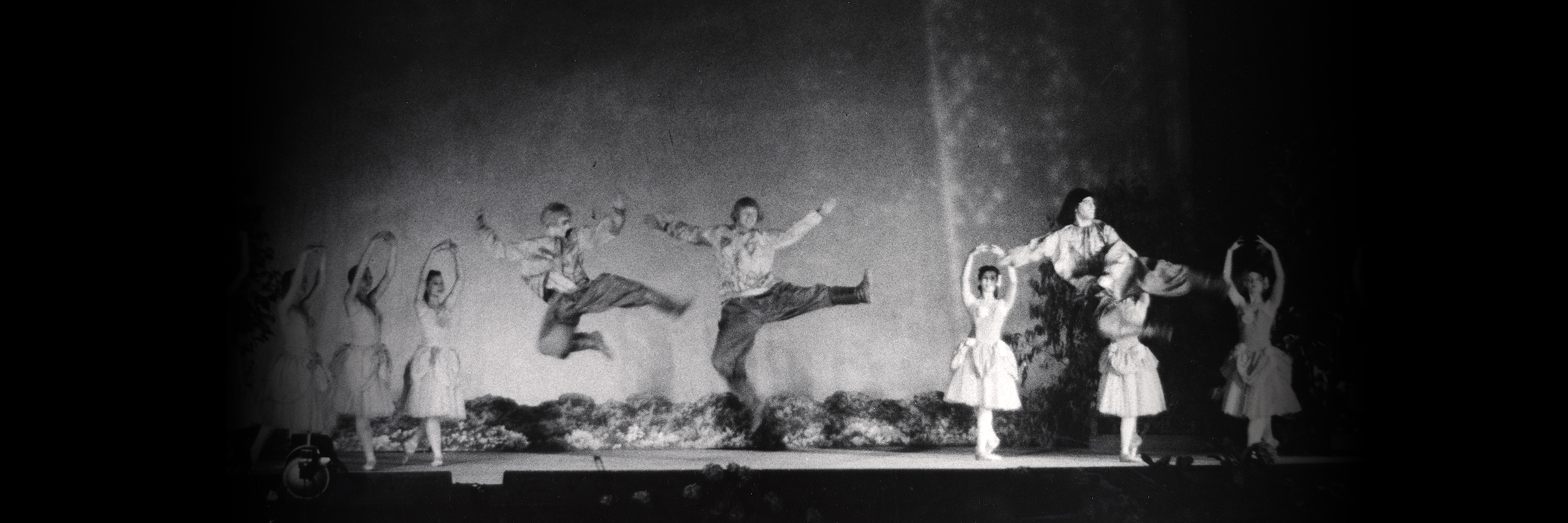Willam Christensen’s 1944 Nutcracker
The First Full-length Production in the United States
Willam Christensen, director of San Francisco Ballet from 1938–51 and the choreographer of America’s first full-length Nutcracker, had no idea that he was launching a national holiday tradition. He didn’t bring the ballet back until 1949, only then did he understand the scope of the public’s interest in Nutcracker. It has been performed annually ever since. Christensen’s Nutcracker was the first of five staged by San Francisco Ballet, where the piece has grown larger, more lavish, and more sophisticated with each subsequent production.
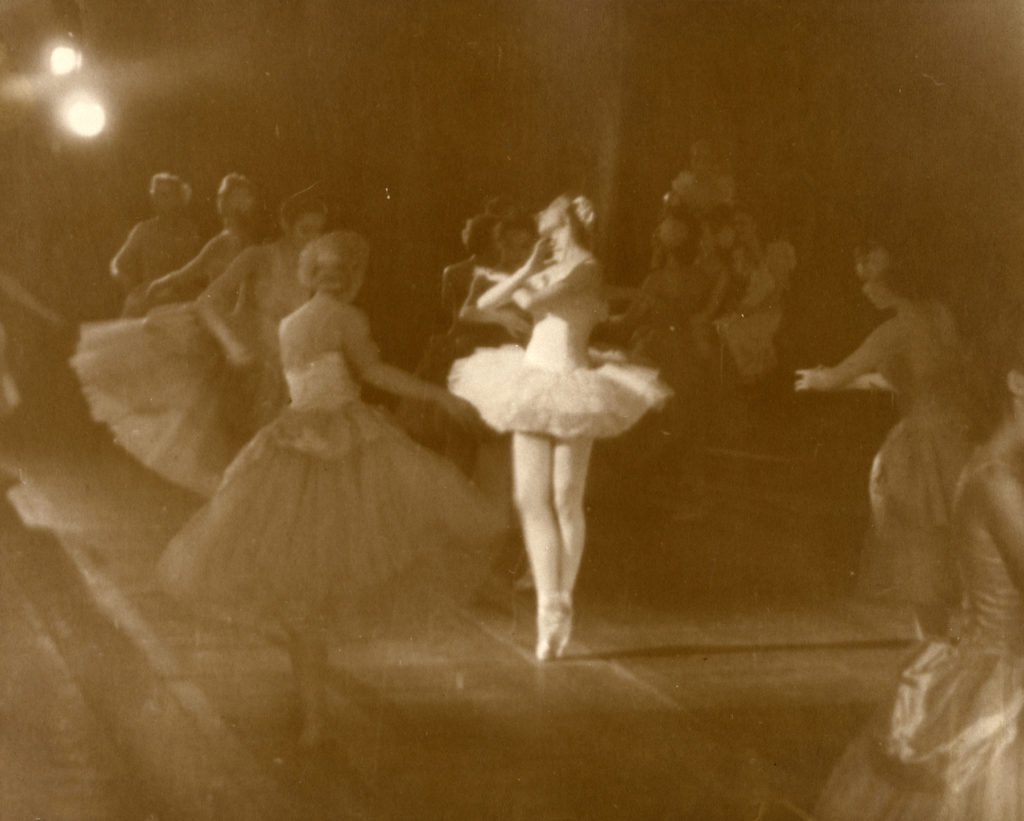
Christensen had never seen the ballet in its entirety before he staged it. He had previously choreographed some of the divertissement and was familiar with other scenes through a truncated version performed by the Ballet Russe de Monte Carlo. He pieced the production together from several sources and contributed his own choreography. He obtained a copy of the well-notated score from the Library of Congress, and Alexandra Danilova and George Balanchine shared their recollections of the Petipa-Ivanov production for the Mariinsky Theater, first danced in 1892. “Balanchine told me about Mother Ginger, or Mother Buffoon,” says Christensen. “He didn’t tell me how to do it, but he did tell me about the eight little girls who are hidden under the skirt.”
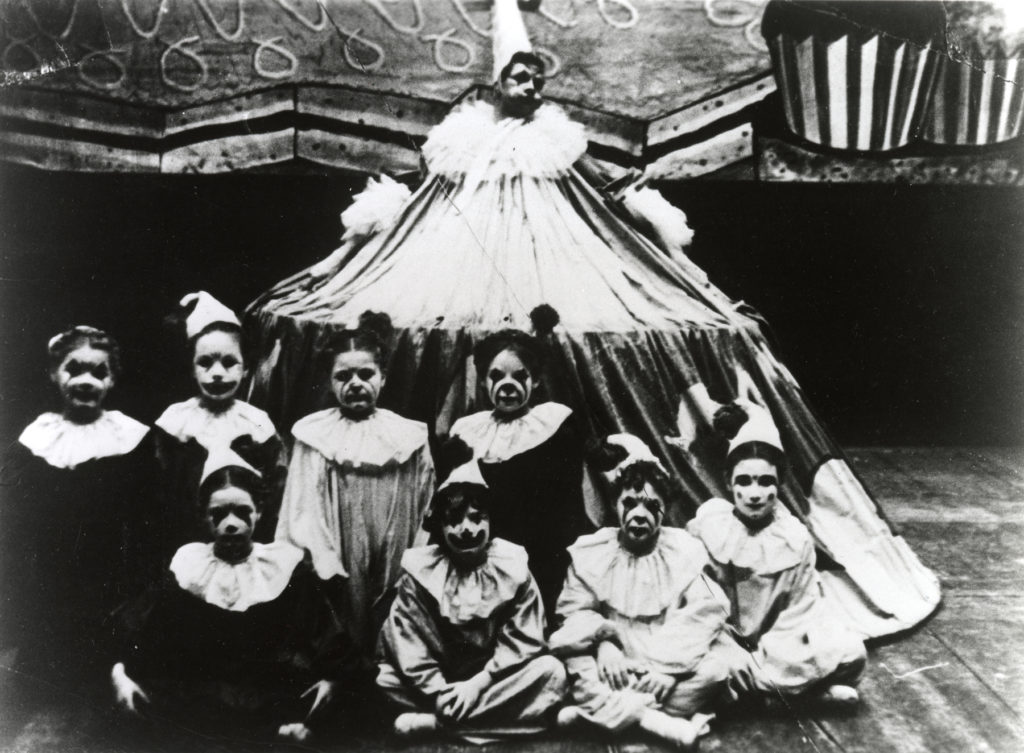
Russell Hartley, a 19-year-old member of the company, who was also a painter, was given a $1,000 budget to design and execute 143 costumes. At a Goodwill store he paid $10 for red velvet curtains, and turned them into coats for the male guests in Act 1. Rhinestone necklaces and other accessories were purchase from Goodwill for $5.
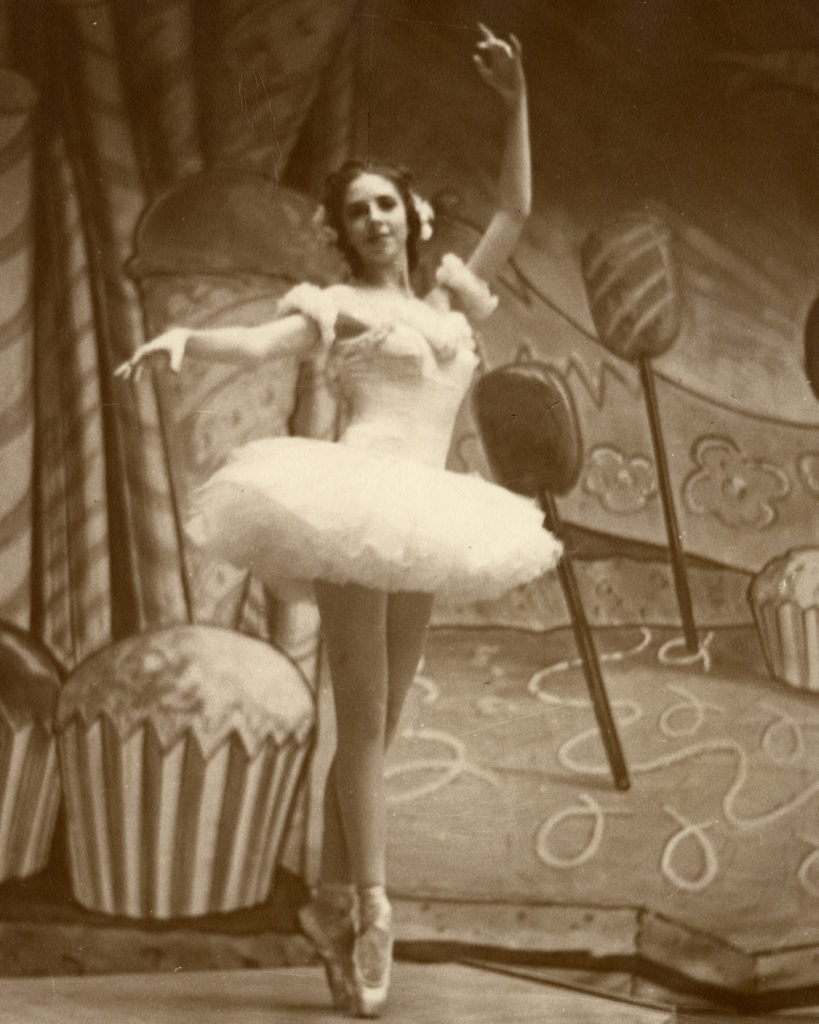
Many of the dancers pitched in and sewed costumes. Among them was Jocelyn Vollmar, the original Snow Queen, who worked with her mother on her tutu. “Wartime materials weren’t very good,” she recalled. “Some of the costumes were wearing out before that first performance, because we’d rehearsed in them a couple of times. The bodice of my tutu was all frayed and I had to sew it up to hold it together.”
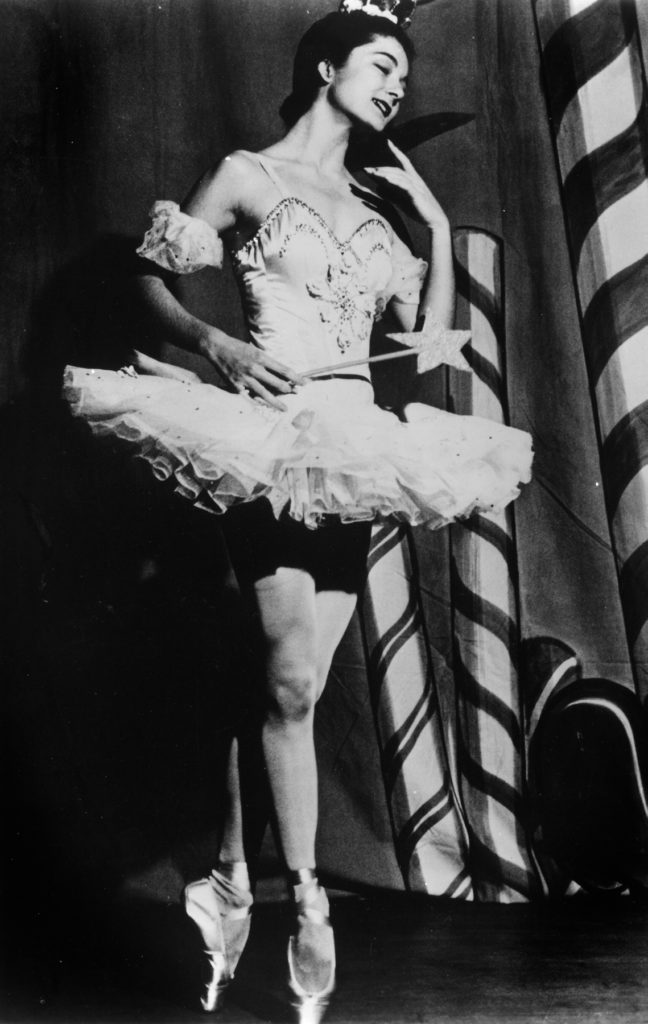
Hartley’s no-frill designs were charming and imaginative. They included life-sized gingerbread men, and a Mother Buffoon who appeared to be a walking circus tent. Hartley’s costumes and Antonio Sotomayor’s sets were a cacophony of bright colors. This was particularly true in the Palace of Sweets, where Sotomayor created a backdrop filled with cupcakes, candy canes, ice cream cones, and lollipops.

The children who participated in the ballet were far fewer in number and somewhat older than the youngsters who appear in San Francisco Ballet’s current production. All the boys’ parts were danced by girls; there were no boys to play them. Drosselmeyer did not have a nephew, and the key children’s roles were performed by adults. Clara danced on pointe. Fritz was played by a woman who later turned up as the lead in the Chocolate variation.
Gisella Caccialanza, ballerina wife of Willam’s brother Lew, danced the Sugarplum Fairy. Willam was her Cavalier. “He used lots of poses and lifts in the adagio that the audience hadn’t seen before,” Caccialanza said.
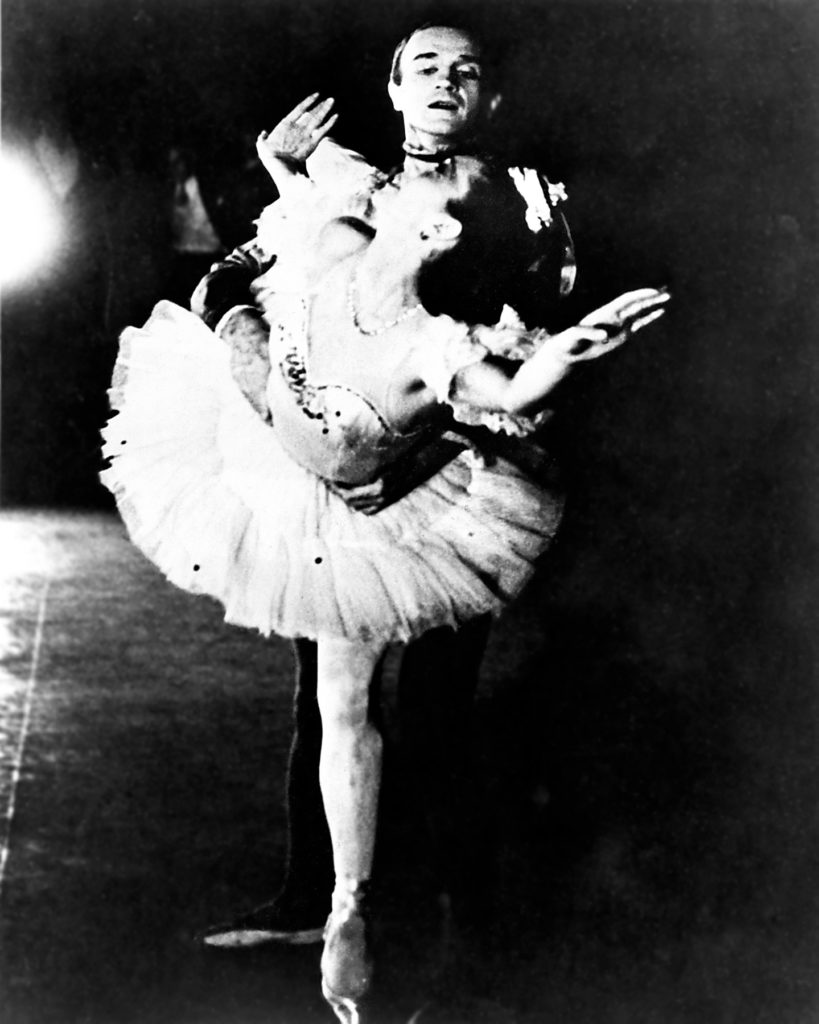
By Sheryl Flatow
Nutcracker runs December 6–29, 2024
Header Image: Willam Christensen’s Nutcracker, 1944. (© San Francisco Ballet. Photo courtesy SFMPD.)



